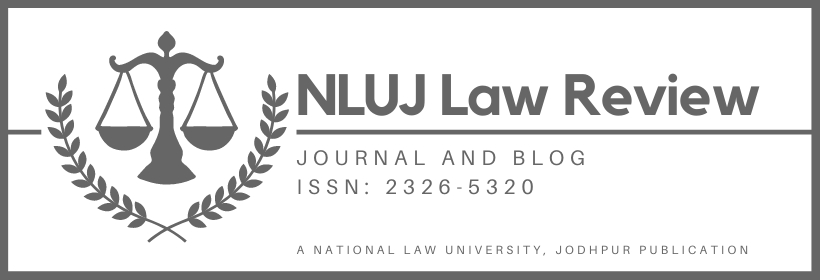One of the prominent propositions of the Competition (Amendment) Bill, 2020 (“Bill”) is the expansion of the definition of ‘cartel’ in Section 2(c) of the Competition Act, 2002 (“Act”) to include buyers’ cartels. A buyer’s cartel means a group of competing buyers who decide to fix prices for purchase or control the supply of goods from sellers. As a result of this proposed change, the Competition Commission of India (“CCI”) will now have the power to evaluate anti-competitive agreements between buyers. However, the Bill fails to satisfactorily delineate the ambit of a buyer’s cartel in the Act. By merely inserting “buyer” in the definition of cartel, the legislature has committed an error of placing the seller’s and the buyer’s cartel at the same adjudicatory threshold, without specifying how the Appreciable Adverse Effect on Competition (“AAEC”) is to be adjudged for a buyer’s cartel.
In this context, this article argues that for the introduction of a buyer’s cartel, without defining it in relation to the goals of the act, is futile and dangerous. Part I of the article explains the scope of cartels, and specifically, delves into the historical context of buyers’ cartel. Part II of the article tries to highlight the enigma between the goals of the Act and the proposed amendment. Finally, the article concludes by recognizing the need for identification of goal of the Act and reconciliation of the amendment with the same.
Current Position of Buyers’ Cartels under Indian Law
Cartels have been recognized under Section 2(c) of the Act as “an association of producers, sellers, distributors, traders or service providers who, by agreement amongst themselves, limit control or attempt to control the production, distribution, sale or price of, or, trade in goods or provision of services”. On a careful reading of this definition, it can be noted that the scope of inquiry granted by the Act under Section 3 involves only seller’s-oriented cartels, without directly or indirectly referring to buyer’s cartel. This can be seen as a conscious choice of the legislature at multiple places in the Act in the following instances.
Firstly, buyers’ agreement was recognized by the Supreme Court (“SC”) in Haridas Exports v. All India Float Glass Manufacturer’s Associationunder the erstwhile Monopolies and Restrictive Trade Practices Act, 1969 (“MRTP Act”). However, importantly, the present Act does away with “any such agreement to purchase”.
Secondly, the Supreme Court clarified in CCI v. Coordination Committee that persons or enterprises not engaged in “economic activity” are outside the purview of the Act. Thus, the end consumers are automatically excluded from ‘cartels.’
Finally, as for intermediate consumers, the Act repeatedly excludes buyers – in relation to cartels under Section 2(c), Section 3, Section 27 and Section 46, thereby indicating the lack of intention to include any sort of buyer’s agreement within the Act.
The question of inclusion of buyer’s cartel came for adjudication in the case of Pandrol Rahee Technologies v. DMRC Ltd. Here, the CCI observed that Section 3(3) dealing with cartels refers to agreements between persons “engaged in identical or similar trade” and consumers could not be covered here. Under Section 2(x), trade includes “production, supply, distribution, storage or control of goods” consciously omitting any procurement or purchase of goods pursuant to buyer’s activities. However, even though the CCI has not decided conclusively upon the issue of buyer’s cartel under the existing regime, it stated in XYZ Corporation v. Indian Oil that the Act envisages buyer’s cartel under its ambit. Section 3(1), which allows for ‘acquisition’ to come under the purview of anti-competitive assessment by the CCI, was looked into. By reading Section 3(1) with Section 3(3)(a), they expansively read ‘acquisition’ and held that buyer’s arrangement to fix prices for buying goods can be included within its purview. However, this was erroneous in my opinion, as a plain reading of acquisition under Section 2(a) indicates that its ambit is limited to controlling shares and assets of a company in context of combination of companies. As per the rules of statutory interpretation, the text should be read in such a manner as would be reasonably gathered from the remainder of the corpus juris. This conflicting situation can only be resolved once the Courts gather the intent of the statute. Looking at examples of conscious removal of ‘buyer’s agreement’ from the statue, it could be argued that the Act is does not prohibit any agreement which protects consumer welfare. The next part of the article tries to analyze the debate in relation to goal of the Act and how it is relevant to resolve the same before introducing buyer’s cartel under the Act.
Goal(s) of Competition Law And Buyers’ Cartel
As per the preamble of the Act, one of the main objectives of the legislation and the raison d’etre of the Act is to protect the “interests of consumers”. Even the SC in multiple decisions, such as CCI v. SAIL and Excel Crop Care, has stated that even though the intention of competition laws and policies is to ensure efficient functioning of the market, its fundamental goal is to “enhance consumer well-being”. However, arguably, another goal of the Act is to “promote and sustain competition in the market” and upholding individual’s freedom of trade. The preamble of the Act along with Section 18 places the onus upon the CCI to not only protect consumers’ interests, but also to promote competition.
This makes it unclear whether consumer welfare is the end goal of the Act or one among many goals. This becomes important to determine because if it is former then anything which promotes consumer welfare even to the detriment of sellers or other market players cannot be considered as anti-competitive. The confusion arises primarily due to ambiguity in the Act, Raghavan Committee Report and the Parliamentary Standing Committee Reports. On one hand, ‘consumer welfare’ as the ultimate goal is reflected in the Standing Committee Report as the main reason for departure from MRTP Act, but on the other hand, the Raghavan Committee Report in Paragraph 2.1.1 states that ‘total welfare’ is the goal of the Act. Even the SC fails to determine the same conclusively and keeps conflating the idea at multiple occasions. Without trying to resolve these conflicting interpretations, the Bill adds ‘buyer’ before cartel, expanding its scope.
For assessing the anti-competitive effects of a cartel, the CCI evaluates the AAEC. This means the CCI takes into account different factors for assessing impact on competition as provided under Section 19(3). Under Section 19(3), sub-clause (a) to (c) constitutes negative factors while sub-clause (d) to (f) constitute positive factors of consumer welfare. In this context, the major problem with the Bill is that it fails to identify any normative standard of anti-competitiveness in cases of buyer’s cartels. The standard followed for seller’s cartel generally, cannot be applied here. This is because the presumption of AAEC as envisaged under Section 3(3) read with Section 19(3) meets the threshold in case of seller’s cartels but it is difficult to identify net social deadweight loss in cases of buyer’s cartel. This essentially means the actual loss to society on account of buyers’ cartel cannot be easily determined because there is no clear loss to end consumers in this case, as is often the case in sellers’ cartel. Buyer’s cartels have the effect of reducing prices to the end consumer, accruing direct benefits to consumers. Therefore, it may usually satisfy some of the positive factors under Section 19(3), making the analysis under the present regime difficult for CCI.
A buyer’s cartel can prevent the consumers from excessive charges by sellers. Even though they may temporarily drive sellers out of market, they may not even possess enough requisite market power to substantially affect the competitive interests of sellers. This becomes even more important to clarify because of the divergent goals of the Act. Without answering whether protecting competition is an end or a means to an end of securing consumer interests, the legislature runs the risk of widening the mandate of the Act. Therefore, it is required that the legislature clarifies the scope of the Act and based on that they create a standard for judging buyer’s cartel.
This does not imply that buyer’s cartel with a reduced price in the downstream market (marketplace comprising end-consumers and sellers/intermediate buyers) cannot ever cause harm to the markets and consumers. This may happen as cartel arrangement leads to reduced final output to consumers. There may also be an increased prices to end-users as the manufacturers may retaliate to buyers’ cartels by increasing the prices – which increases input costs for the intermediate buyers. Hence, the end-consumer will have to ultimately bear the brunt of the tussle between the sellers and intermediate buyers in the upstream market.
Buyer’s agreements can also yield relative market power other competitors to affect entry/exit incentives and reduce healthy competition harming consumer interests. When there is variance in relative market power among these firms in the downstream market, then consumer welfare may be harmed. This dichotomy between the roles of buyers’ cartel have been tried to resolved by other jurisdictions such as the USA which distinguishes cartel from purchasing joint ventures or buyer’s groups. The USA defines any cartel with anti-competitive effect per se illegal as per the Sherman Act, however, it exempts a buyer’s group from its purview. A buyer’s group is a congregation of buyers to enhance bargaining powers of the consumers to reduce their transaction costs without harming competition. The Indian Legislature could have made such a distinction or create any differential standard of assessment for the monopsonist or buyers’ cartels rather than treating them at par with monopolistic cartels.
Conclusion
This paper discusses the shortcomings of the Bill which seeks to introduce buyer’s cartel under the Act. In the author’s opinion, there is enough evidence to show that the main focus of the Act is to promote consumer welfare, however, the legislature has never clearly stated the same. This necessitates the analysis of the goals of the Act by the legislature. and in light of the same, clarify the scope of ‘buyer’s cartel’. It needs to specify if mere efficiency concerns or losses to sellers can be reasons to penalize buyers. For assessing buyer’s cartel, the onus should be upon the investigating authorities to – firstly, demonstrate that buyers have enough market power to reduce price below the normal competitive level or distorting output for the consumers overall; secondly, to determine whether they exercised such power; and thirdly, to identify the direct threat to competition in the market in view of the goals enumerated in the preamble. Without such an analytical exercise, the Bill, in its present form, has the capability to diminish the incentives of the buyer’s group by penalizing them for bargaining with the sellers. Thus, there is a need to rethink the Bill or it may open a floodgate of litigation.
This article has been written by Mansi Gupta, student at National Law School of India University, Bangalore.



